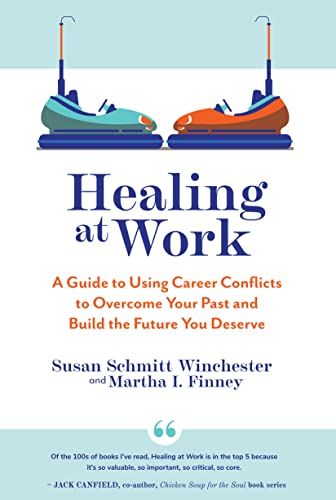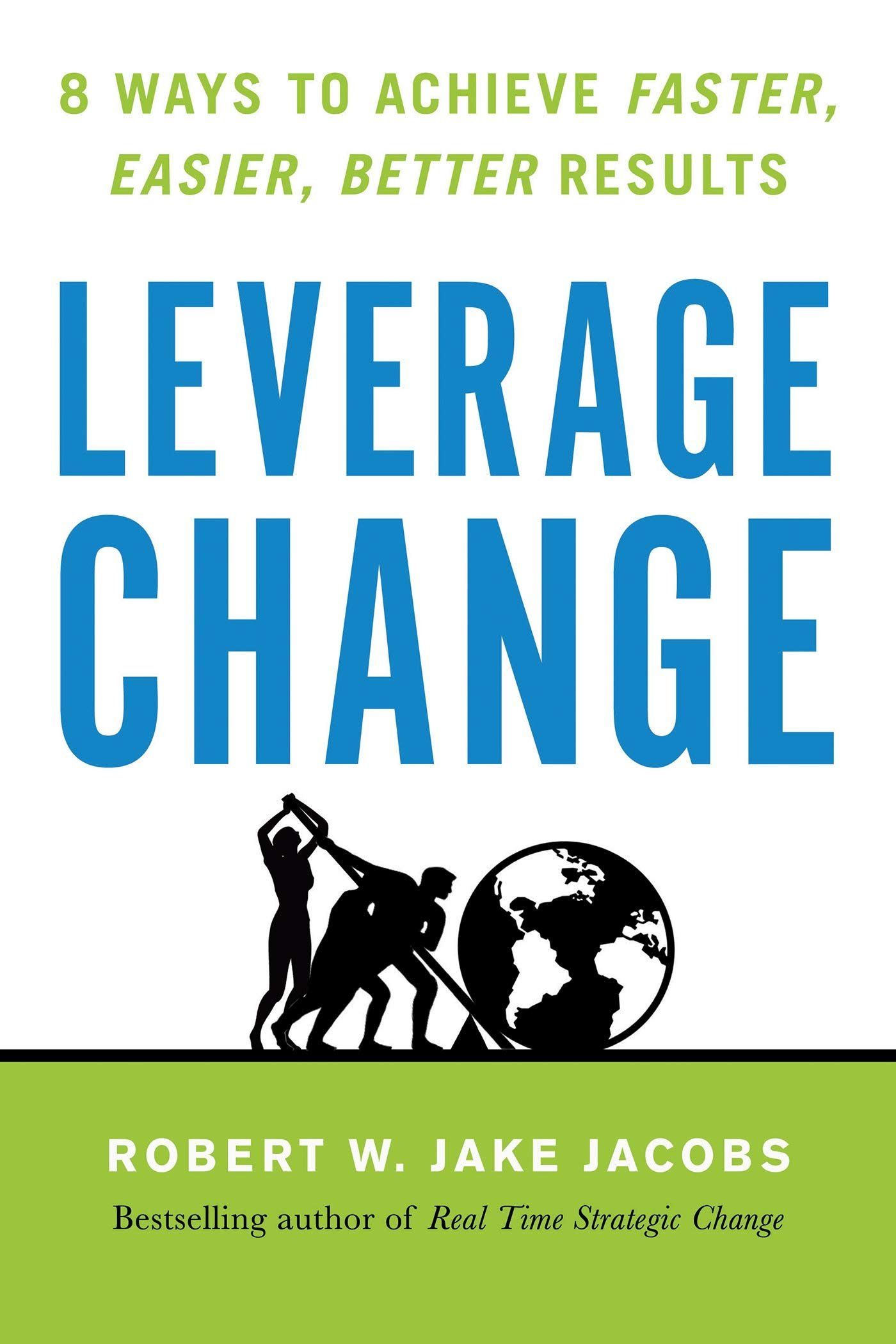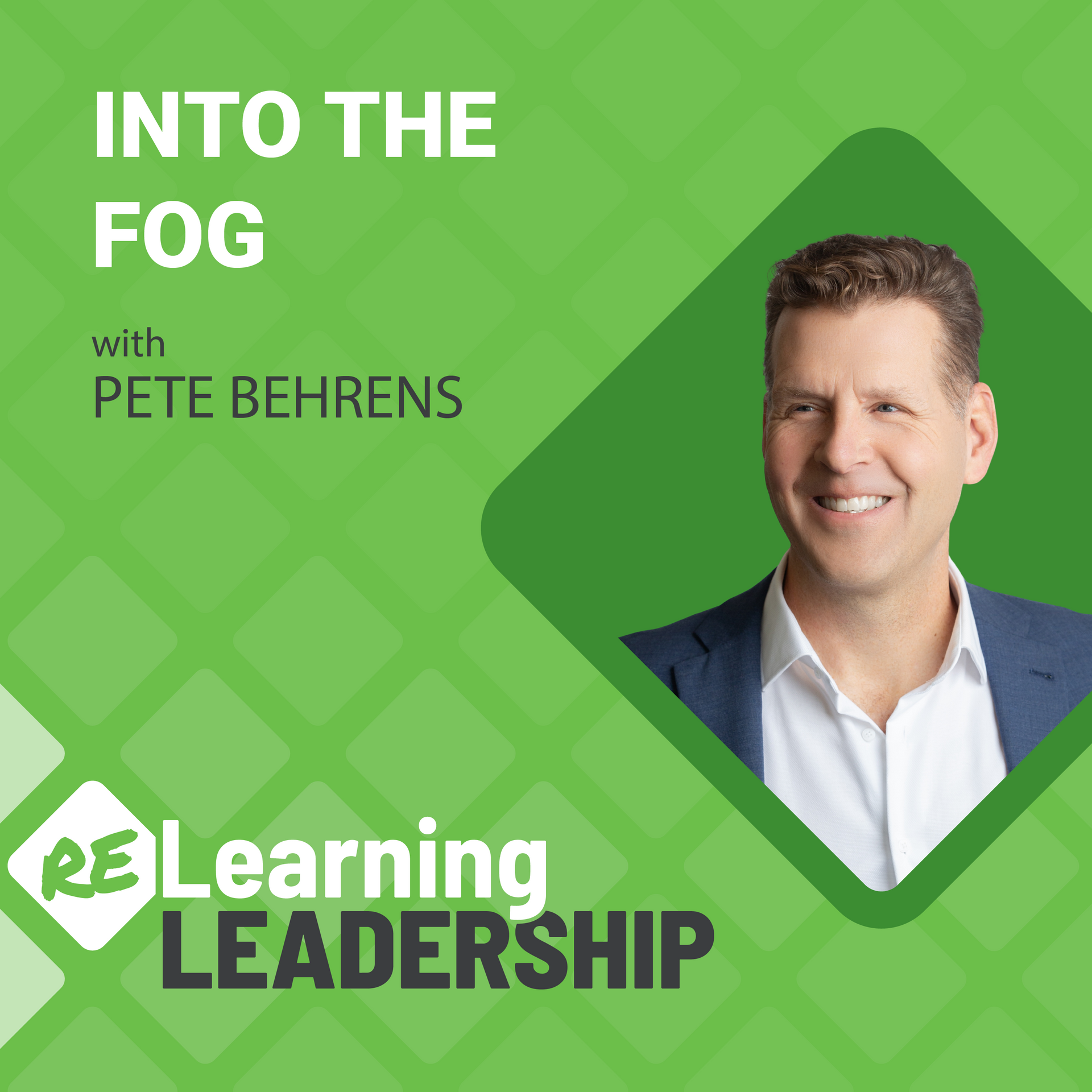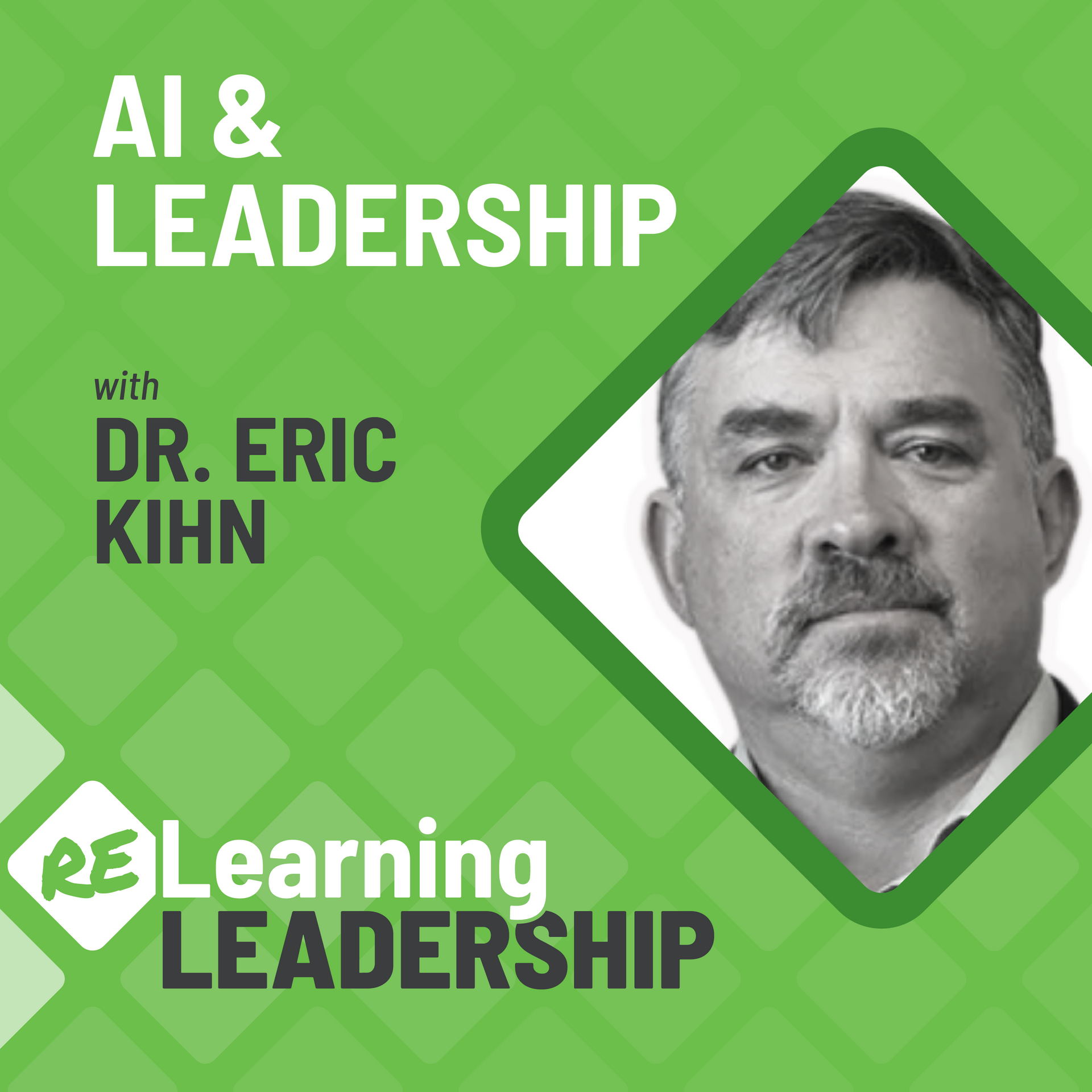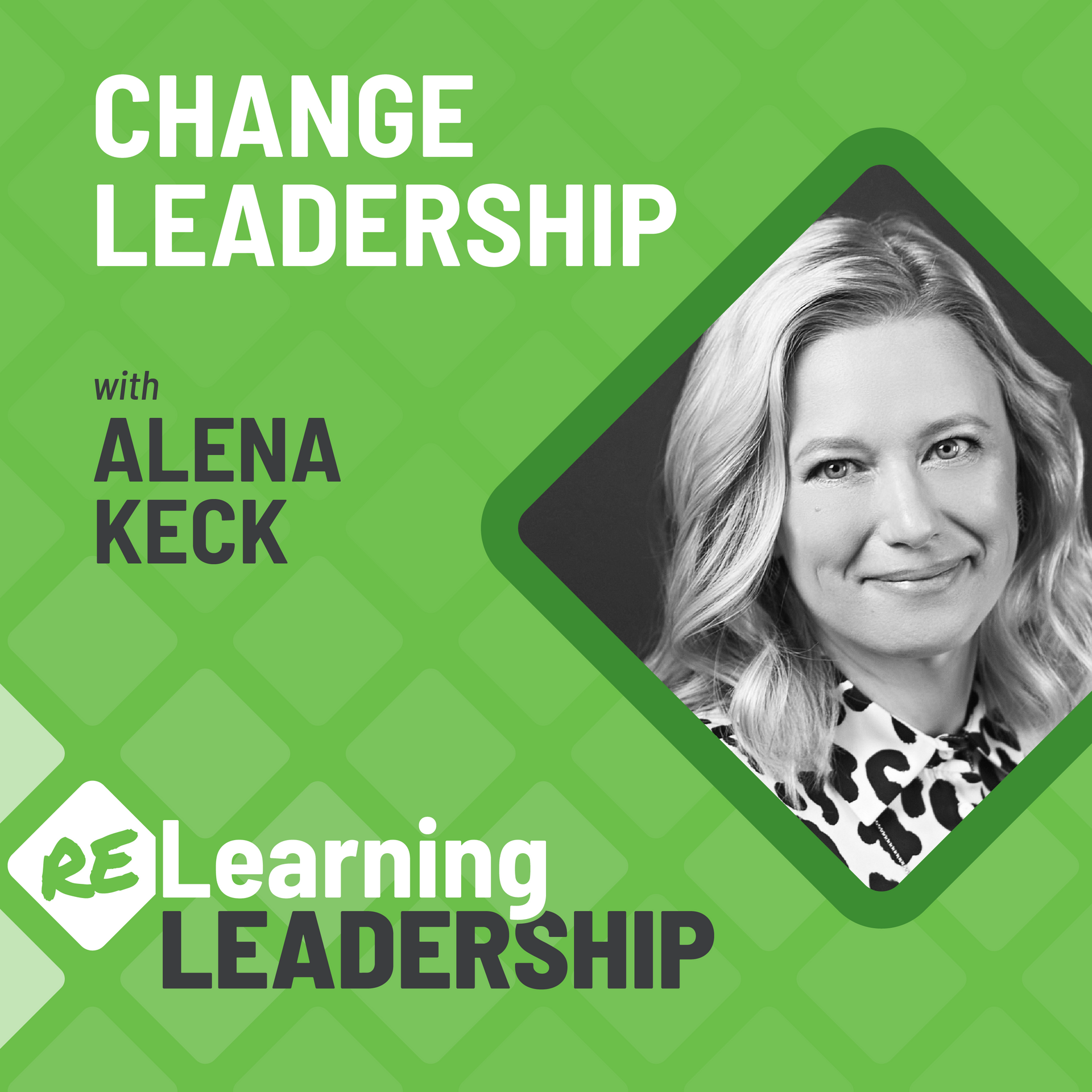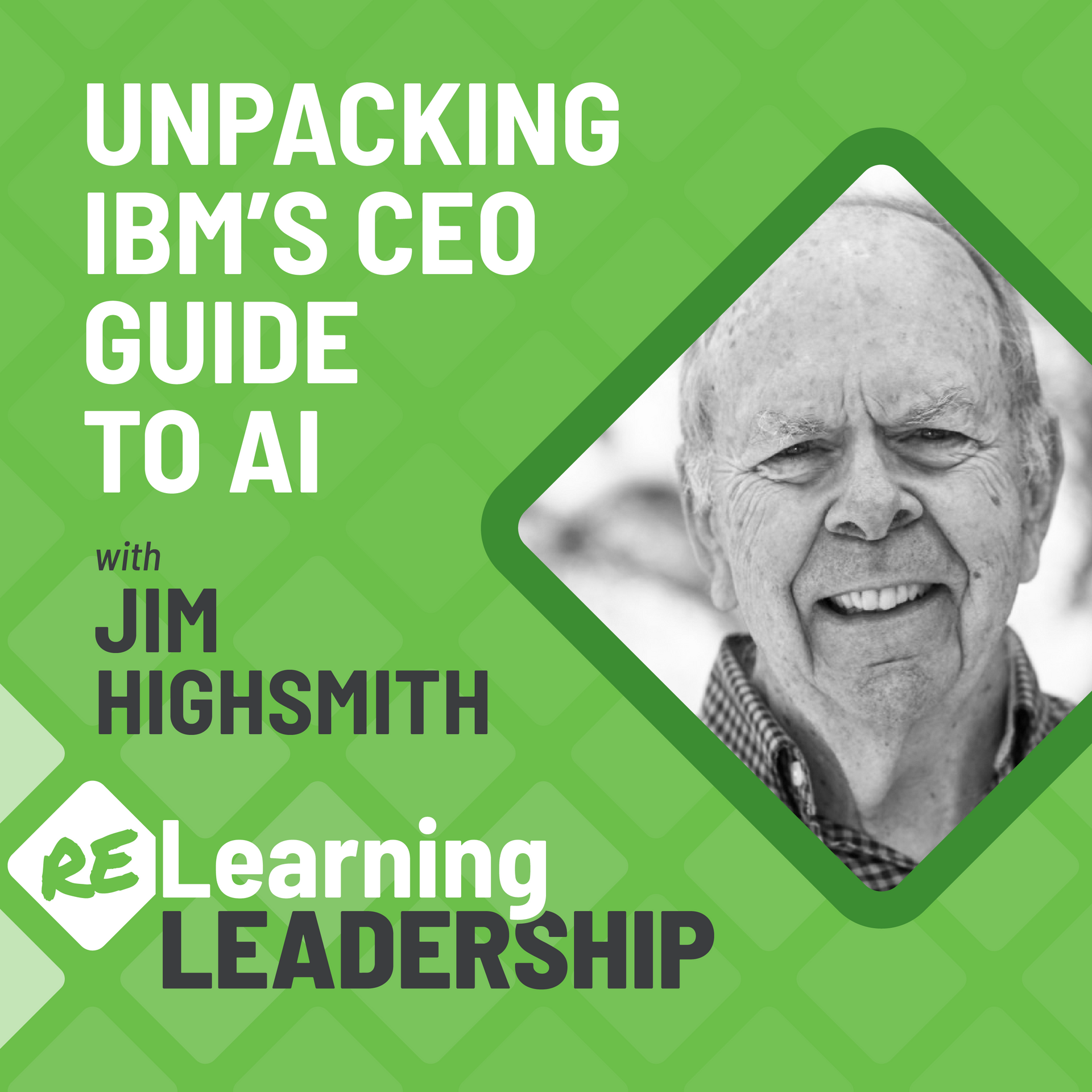18: The Paradox of Change
Why leaders need to celebrate continuity and stand up for status quo!
Susan Schmitt Winchester is a Senior Vice President and Chief HR Officer for Applied Materials. Jake Jacobs is a principal change consultant and author of Leverage Change. They explore the paradox of change in this episode
In today’s fast-paced work world, leaders are rightly focused on change. But are leaders too focused on change? This episode explores the idea that leaders need to raise their game in celebrating continuity and stand up for the status quo!
Susan Schmitt Winchester, Senior Vice President and Chief HR Officer
Susan teaches executives and professionals how to succeed by discovering greater self-acceptance, fulfillment and joy at work and in life. However, her path through life has not been easy, as she shares a difficult past where “The People who know me best know that I spent my days and years in deep fear.”
She shares her story in her recent book Healing at Work. Through learning how to accept herself and how her damaged past affected her self-esteem and beliefs about the world, she is learning to love life and her place in the world. And now she is crystal clear on her life’s purpose — helping others achieve joyful lives through the journey to self-acceptance.
Today, as an executive, mother, ballroom dancer and horseback rider, Susan celebrates all of life with a positive spin on the world as her LinkedIn profile declares herself as an Energizer and Eternal Optimizer!
Connect with Susan
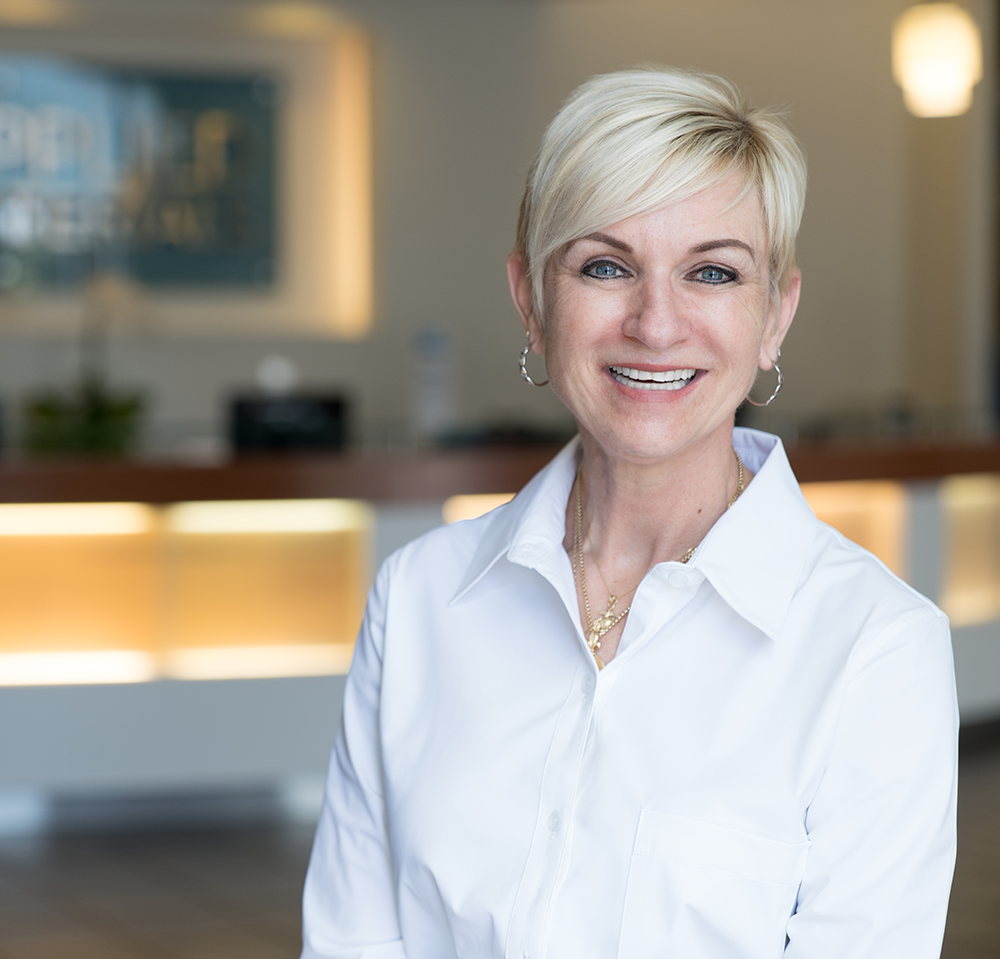
Jake Jacobs, Principle Change Consultant
Jake is a principal change consultant with Jake Jacobs Consulting, a firm that helps organizations, teams, and individuals make monumental changes. Over the past 35 years, he has worked in 61 industries, from high tech to manufacturing to hospitality to entertainment to financial services, and consulted to 96 organizations, from Fortune 50 to national non-profits and community theaters.
Jake lives and consults through a set of principles that work with any system of change you’re using. He calls these principles “Levers” as they make it possible to achieve results faster, easier and better than you might believe possible, helping to get more done with less - less confusion, less wasted effort, less time and fewer problems.
Connect with {author name}
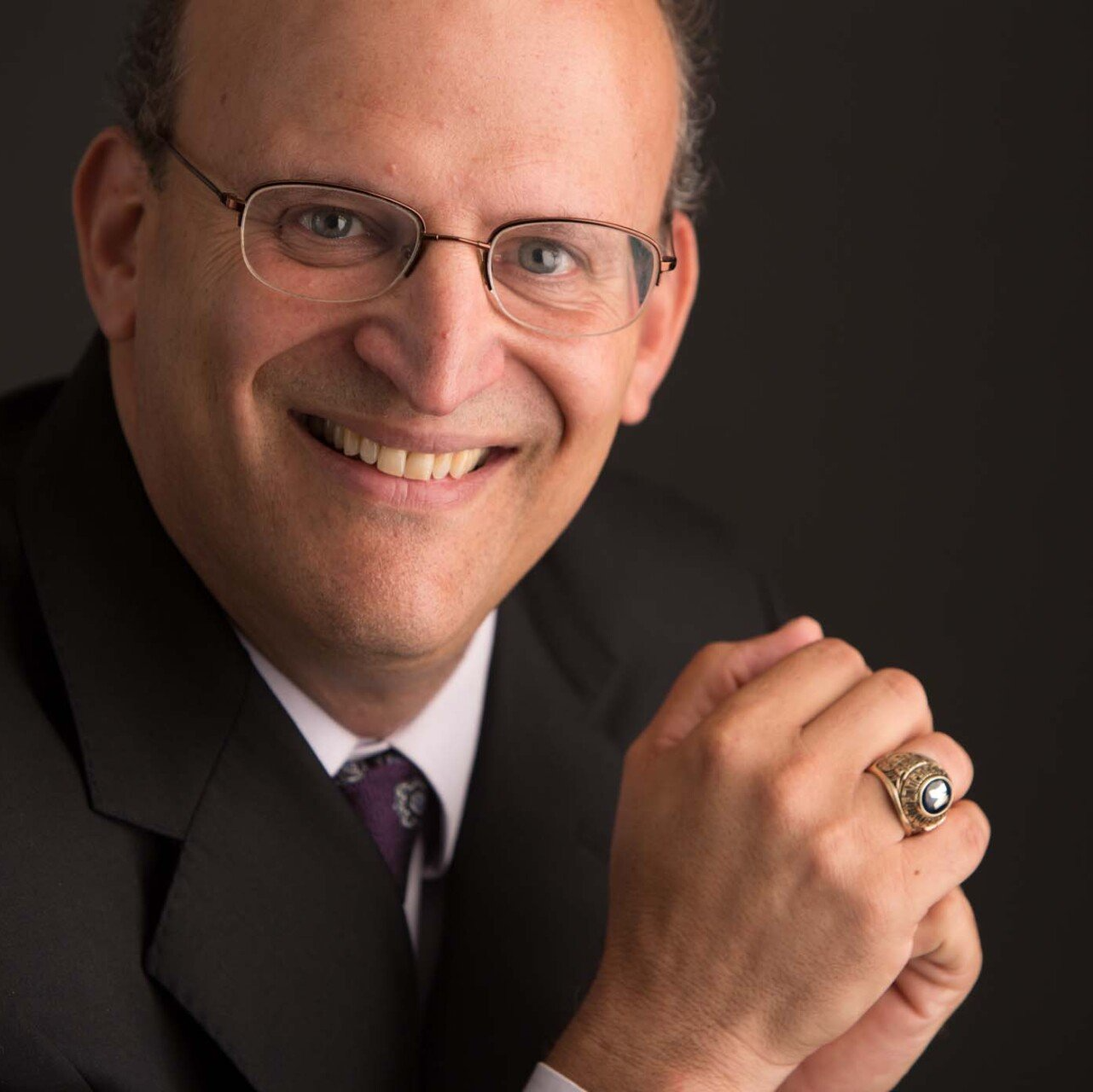
Healing at Work
Did you grow up in a dysfunctional or chaotic childhood that made you feel uncertain, unloved, unsafe, anxious, never good enough? Are you shocked to discover that you’re still feeling that way now that you’re a professional adult? Are limiting beliefs getting in the way of the career success that you deserve? Do the stress and worry you suffer at work rob you of your joy and self-acceptance? You don’t have to be imprisoned by your past. No matter how bad it was. And you’re not alone! Healing at Work: A Guide to Using Career Conflicts to Overcome Your Past and Build the Future You Deserve, by career experts Susan Schmitt Winchester and Martha I. Finney, gives you the skills and insights you need to thrive in your career and in life. Building on the principles that “damaged is not doomed” and “the rest of your life is yours,” Winchester and Finney incorporate world-class career advice, principles of positive psychology and the latest research in neuroplasticity to help you see how you can use your career and workplace experiences to build the life of happiness and success that you desire. Learn more
Leverage Change
Organizational change doesn’t have to be so difficult. Leading change expert Jake Jacobs shares eight fail-safe ways to make any change initiative at any organization easier, faster, and more effective.
In this book, Jake Jacobs provides eight levers that can transform the typical change process into something far smoother and more efficient - he calls the new process "leverage change". Jacobs offers proven advice and real-life examples that will accelerate every step of the change process, including designing your own customized change process, figuring out where the real energy for change is in your organization, striking the right balance between explicit direction and creative collaboration, making change work as part of people’s regular routines, and more. Archimedes said with the right lever, he could move the world — with Jacobs’ eight levers, you can change your world. Get the book
Relearning from this episode…
Jake and Susan masterfully guided us through a labyrinth of change. And while we only touched the surface on this paradox, I have come away with some new perspectives on how to navigate change more successfully. I’ll offer my three Cs on the paradox of change.
- Celebrate Continuity. In our hyped-up, dizzying world, change is necessary for survival. However, celebrating the status quo is equally important. Although we often tag people defending continuity as resistors to change, we should be honoring them as celebrators of what is working.
- Turn Judgement into Curiosity. The human ego is a frail system, easily triggered, and protected by a range of defenses to keep it from further damage. Checking our own ego by turning others’ seeming judgement into curiosity provides us time to respond constructively and space to draw out others into a more co-creative solution.
- Embrace Conflict. Conflict is a visible scar on a deeper wound. It signals a difference of perspective or a diversity of experience. Without an ability to express their differences, changes will only further deepen wounds and push people into emotional reactions of fight, flight, or freeze.
We Celebrate Joy Zimmerman’s Milestone
Joy Zimmerman, the creator of the music you hear on this podcast, is celebrating an award-winning album this summer. The Canvas Before Us reached Top #8 on the International Folk Chart!
Visit Joy Zimmerman Music
For this episode, I was drawn to the irony in the different perspectives we hold—and how it leads us to conflict—in her slightly off-humor track,
Dear John or Jane. Listen for the dichotomy in her lyrics as you enjoy this track presented at the conclusion of the episode.

Episode Transcript
Pete Behrens:
Why is celebrating continuity so critical in leading change?
Welcome to another episode of Relearning Leadership, where we explore a specific leadership challenge and break it down to help improve your leadership, your organization…and even your personal life.
Today, we rethink about change and discover why standing up for the status quo and those who hold onto it are critical to effective change leadership.
Jake Jacobs:
Most of the time, when leaders get up and start talking about change, that's what you hear. And that's all that you hear. What we want people to do is to see that there's value in continuity. There's wisdom in resistance.
Susan Schmitt Winchester:
We're not trying to solve status quo or change, but you have to manage the tension. There's opportunity to actually use those conflicts as catalysts for change.
Pete Behrens:
That is Jake Jacobs and Susan Schmitt Winchester, joining me to explore this paradox of change.
I’m Pete Behrens. Thanks for joining us today. Let’s dive in.
Today, we explore the world of change at work from two perspectives. Jake Jacobs is a consultant, columnist, change guru who wrote a book, Leverage Change. Susan Schmitt Winchester is a Senior Vice President and Chief HR Officer at Applied Materials and wrote the book Healing at Work. It appears we're set up for a change-off, or in other words, a face-off on change. So, Susan and Jake, welcome to the show!
Susan Schmitt Winchester:
Thank you, Pete.
Jake Jacobs:
Thanks so much Pete. We're pleased to be here.
Pete Behrens:
So, Susan, I loved your subtitle on LinkedIn. It says “eternal optimizer and energizer.” Would you tell us more?
Susan Schmitt Winchester:
I think that I look at the world through the lens of the possibility. And looking at, you know—what can we do versus what can't we do. I'm the eternal optimist. And I remember—years ago, I had a boss who said to me,
“Are you always this optimistic?” And I said yes. I think organizations could leverage optimism more. So, yeah, that's just a part of my nature.
Jake Jacobs:
I want to jump in, Pete, on the optimism scale there. I have been accused of being overly optimistic. And my father was a card-carrying member of a club called the Optimist Club. So, Susan is not our only optimist on the call today! I just wanted to put a good word in for optimism and positive psychology and some of the things that Susan will share with us.
Pete Behrens:
Maybe we're a little bit biased here. We got a bunch of half-glass-full people in the room now. While I was being a little bit provocative in our introduction, it does appear we're focusing on two sides of the same
change coin
here. But Jake, I want to maybe start with you, as an instigator of this episode. I'll let you set the stage for us on change. Where should leaders start?
Jake Jacobs:
I think, actually, Pete, one of the best things that leaders can do is to start by embracing it, to face into it fully and grab hold of it and shape the future of their organizations and help their people shape their future of the organizations. And so, a proactive stance around change—this is not a problem, this is not a difficulty; it's an enormous opportunity for organizations. Any kind of change that we're talking about, whether it's a cultural change or a strategic change or a business practice change—any of those are opportunities for an organization and its people to create their collective future.
Pete Behrens:
Well, it sounds like certainly you're taking the
glass half-full on change. Susan, how do you see that?
Susan Schmitt Winchester:
Well, you know, I've had the privilege of working in a number of large Fortune 500 companies for many, many years. I think the reality is that you have leaders who are very comfortable with risk and doing new things and innovative things. And you have leaders who are less so, more on the conventional, risk-averse side. And so, it's a matter of bringing along different people on that change continuum. And doing it in potentially different ways, depending on the leader's own level of risk tolerance.
Pete Behrens:
So, you're definitely going towards much more of a nuanced—where a leader is showing up. And how you're addressing that, so it's not a one-size-fits-all. Is that a good way to say that?
Susan Schmitt Winchester:
Yeah, I think that's definitely a good way to say it. And the reality is that—many people are motivated by a need for security. I think that's a pretty normal human need. I think, sometimes, leaders perceive a lack of security or loss of security with too much change, or a change in a direction that they're unclear about or are thinking, somehow, they could lose something by going forward with that change.
I hired Jake at one of my former companies a number of years ago. And one of the things that he does really well is—he helps people, leaders, in this case, who maybe are in different camps. You know, those that are wanting to stay with status quo, those that are wanting to drive change. And what I learned from him is that we have to think about that not as a problem to solve. We're not trying to solve status quo or change, but you have to manage the tension. Because either side has upside and downside.
And rather than trying to do one or the other or push someone to do something they're not comfortable with, how do you help them look at the upsides of both of the ends of the continuum? And then the downsides, so that we optimize upside and mitigate downside. And so, I think that's a really practical approach to bringing all perspectives into the discussion. And in that dialogue, you're actually moving forward with a more informed approach to change.
Pete Behrens:
Jake, I'll have you respond to that.
Jake Jacobs:
Yeah. Well, first, let me say—that's a brilliant response, Susan. And the other benefit to it, Pete, is seeing what can be gained from each point-of-view. So, rather than me seeing if
“You're right; I'm wrong”.
Which, preferably, I'm going to be right, and you're going to be wrong. And so, then we've got to find problems with people's arguments. And we have to dissect what the other person's saying. And rather than listening for a collaborative answer, we're listening for one where we can pick apart the other person's argument. And so, we end up being on two sides of the table and arguing about what's in the center. And this paradoxical approach to change brings both people on the same side of the table. And now we're looking at the situation that's on the other side and asking,
“What can we each bring to the party to be able to make that work for you and for me?”
And one of the things that's always most amazing about this paradoxical approach is that when you make an argument for continuity and you say, “You know, this is going to capitalize on our core values, and this is going to take the best that we've done in the past and present, and it's going to bring predictability to us.” The person who wants change is not going to argue with those things. They're going to agree with them. And the person who's talking about, “Change it!” says “This is going to bring forward new markets and innovation and possibilities that we haven't seen before.” The person who is arguing for “continuity” is not going to look at that and say that those are bad things.
So And in the book, I call the first chapter Pay Attention to Continuity. And this is a whole book on change. So, why am I doing that? I'm doing it because it's paradoxical, because what we want people to do is to see that there's value in continuity. And most of the time, when leaders get up and start talking about change, that's what you hear. And that's all that you hear. And even though they may be thinking to themselves, “Hey, look! We're not throwing everything out here.” If they don't say that out loud, if they don't make a point of it in their emails, in their town halls, in their one-on-one conversations, people don't hear it. And what they do hear is, “We're going to turn this world upside down! Things are never going to be the same.” Right? They start to create this conversation in their head. And it's not based in reality.
Pete Behrens:
Well, that's really interesting and a lot to dissect. And what I want to pick up on is—we often think of change and resistance. And what I hear you saying is,
“We have ‘Celebrate change’ and ‘Celebrate continuity.’” And that, to me, is a mindset twist. Am I reading that right?
Jake Jacobs:
Yes. Yes, you are. And, in fact, I'm gonna go even further. There's wisdom in resistance. And so, these resistors are not troublemakers. Like, they're not out to make your life difficult, if you're trying to bring about change. They are not mischief makers. They are not, you know—there are worse words that they get called, that we won't use on the podcast. But all of this resistance comes for a good reason. And if we see them as value-added members of the team, they tend to add value to the team. Troublemaking is in the eye of the beholder. So, if I have you, Pete, be a troublemaker, which—you look like you are!
Pete Behrens:
Thank you! Yes.
Jake Jacobs:
Then you tend to create trouble. But, if I have you, be an MVP of the team, if I have you be somebody who watches my backside because you pay attention to things that I don't pay attention to, and you value things that I don't naturally value, we’ll be stronger for it.
Pete Behrens:
So Susan, when you get somebody who's pushing back, what is something a leader can do to help bring a positive spin on that resistance?
Susan Schmitt Winchester:
Well, I really like how Jake was describing it a little bit ago, in terms of
“Resistors can be the greatest teachers and can provide the greatest insight about how to make the solution better.”
And so, the resistance, to me, is always an opportunity of becoming curious. Typically, if we think we're driving some change and someone's resisting it, it's very easy to take it personally and to get defensive and start pushing harder. Generally, when you people get pushed away. It's not a good solution.
I learned this technique from an executive coach I had years ago named Tony Lynch—you know, I love this! Rather than reacting with judgment, which is a normal reaction when someone's pushing on us and we feel like we're not going to get something accomplished, switching out that judgment to curiosity about, “Well, tell me more about that? And why do you think this isn't going to work? What do we need to do to improve it?” And then, all of the sudden, you're having a two-way dialogue, based on curiosity versus that other person feeling judged. And then you can open up all kinds of different possibilities. And, generally, the ideas that come from the resistors make the solution even better.
I remember—years ago, I was leading a team to create a company's very first—what was called The People’s Services Center. And we had certain parameters that we had to do this in, but it was painful. We had HR people in all the manufacturing facilities. All those people were going to be going away. So, rightly so, the union leaders weren't very happy about it. There's a lot of resistance. And so, we created a process where we brought the union leadership into the design of the solution. And we had parameters around what we couldn't negotiate, but we had a lot of room to negotiate what the solution would look like.
And I'll never forget—you know, all the different focus groups were working on their designs. They were all going to present out. You know, a number of groups had gone. Finally, one of the union leaders from the Memphis facility stood up. I'll never forget it. He said, “You're all way over-complicating this!” And he drew a very simple model of what they thought should be the solution for the company. And we all stood back. And it was so beautifully simplistic, but it was so powerful. We adopted his model. And so, anytime I was in front of union employees, I could say, “Well, you know, this is your union leader from Memphis. It's his model.” Well, that goes a long way with driving change—is to include the resistors or potential resistors. I don't think he was personally that resistant. But the plants were going to lose their key people on site. So I love resistors. I mean, it takes a little bit more creativity about how to leverage what's being resisted. But, overall, they make the solution much better.
Jake Jacobs:
And, Pete, I want to jump in and build on something Susan said about curiosity. I talk about four magic words that you can use which speak to exactly what Susan's saying. Which are
“Could you say more?”
And when you are in a position of power or authority over somebody and you say
“Could you say more?” genuinely—you've got to be genuine, right? Otherwise it doesn't—you don't get points for saying it and not meaning it. But if you're serious about it, what that does is—it's an invitation for somebody to get on a playing field with you and to actually contribute their thinking. It makes it a safe space for people to be able to ask anything they want, suggest anything they want.
And I think this is true in life, right? The more curious and the less judgmental, the better your life's going to go for you, because you find that you're a lot more accepting and a lot less frustrated with other people because they keep not doing what you want them to do. But if you understand why they're doing what they're doing—and this goes for a spouse, a significant other, a child, a parent, like, whoever it may be, a buddy of yours—all of this comes from curiosity. You learn more that way. And when you learn more, you make more informed decisions. And more informed decisions, whether you're in a business context and you want to call them more strategic, or they're in a personal context and you want to call them more compassionate. And I'm not saying you don't need judgment. You do need to have judgment, but that's a decision-making criteria. It's not a way of moving through the world, where you're judging other people. That's what I'm talking about.
Susan Schmitt Winchester:
I have to jump in here, too, because—you taught me this, Jake, years ago. The
“Say more.” It used to be just
“Say more.” Now it's, “Could you say more?” But it's a really good strategy because, sometimes, when you're getting resistance, you're getting mad. Yeah, it's normal to get frustrated. And just asking,
“Say more!”
gives you time to calm down and to listen to what else is going on. I've used that technique many times. It's a really powerful technique. I love that.
Pete Behrens:
Well, I think you hit on, probably, one of the key barriers to curiosity—is your own threat response. You know, when somebody challenges you, when somebody pushes back, when somebody questions, the ego takes an immediate hit.
“Okay, they don't like what I'm saying. They don't approve of what I'm saying. They don't agree with what I'm saying.” It puts us in a defensive position. And what you're suggesting is—you've got to have an exit strategy out of that defense to create the openness for resistance to emerge.
Susan Schmitt Winchester:
You are so right. And it actually makes me think about the book that Martha Finney and I just wrote, the
Healing at Work book. The research shows that nearly two-thirds of us grew up with at least one trauma before the age of 18. It ranges from emotional, physical, sexual abuse to neglect, to addiction in the home, and a variety of different things. And what I have discovered on my own journey is that we walk away from our childhoods with some limiting beliefs about ourselves. And we also walk away with a variety of different strategies to help us navigate a safe environment.
And when we enter into our careers, we're often unconscious to how much our limiting beliefs and triggers can cause us to go into a completely unconscious response. So, if you put that in the context of the change discussion we're having, if someone's pushing on your solution and you're starting to get triggered because it's triggering your limiting beliefs—“I'm not good enough! I'm stupid! I'm not worthy!”, whatever it is—then we immediately have a physiological reaction: fight, flight, or freeze. You know, the people that fight are often the aggressors and bullies and companies. Freeze is just, actually, shutting down. Flight is either staying invisible, not speaking up, or actually leaving the company. And so it exacerbates the challenge of, “How do you stay open and curious in a moment when someone's really pushing on you?” Because the trigger button can launch a huge explosion in our heads, based on some of the things that happened to us in the past.
So the opportunity—and this is what I think is really key—is teaching people that a lot of us have been programmed and conditioned with certain scripts and reactions and responses that actually aren't that particularly helpful in companies, especially in change. And actually has nothing to do with the in-the-moment interpretation of what's happening.
Pete Behrens:
Wow. I just did an episode with Wendy Ryan, who talked a lot about trauma and how identity is informed by trauma. And you're adding to that viewpoint, that many of us have significant impact from either, you know, current, COVID or, you know, historical trauma that we're dealing with.
So, Jake, you've talked about it as, “Okay, think of change as positive!” You've talked about, “Think of resistance as basically celebrating continuity.” Leverage Change seems, to me, proactive. So, talk to me a little bit more about that proactive side of change versus the responsive side of change for leaders.
Jake Jacobs:
Leverage, at its essence, is about getting more done with less. And when I talk about leverage, I mean less headaches, hassles, problems, things like that. But also, in the area of change, can be less resources. Which—a lot of leaders’ ears will perk up to that, and they'll say,
“Well, what do you mean?”
And it's because you spend less time spinning your wheels. You spend less time making investments in things that aren't going to pay off or going down roads that aren't going to lead where you want to go.
And then this proactivity that you bring up. I think there are two general ways we can go through life, and none of these are mutually exclusive. But we can create our life, or we can let our life happen to us. And when we're having those responses—and, Susan, you can talk about bumper car moments in just a second. But when we're having those immediate responses that are sort of, you know, fly-off-the-handle reactions that aren't tied to the current reality, that's reacting. That's letting life dictate my terms that I'm going to be living on.
So, I think it gets to a more fundamental level about how we go about living our lives and how we go about living our organizational lives and our personal lives. To say, “Am I going to be creating, proactively creating my future, whatever changes those may be?” Or, “Am I going to just let the future happen to me and be stuck with what gets delivered on my doorstep?” And so, I think when you look at change in organizations, yes, you can make an argument that a competitor makes a move and so that forces your hand in a certain way. And, of course, that's part of the game, and you need to be responsive in those moments. But that, to me, I define differently than reactive. And reactive is, like, “Well, my back's against the wall. I can do no other thing. I've got to respond in some way.” And so, if you become the kind of organization that lashes out when it's faced with competition, it's no different than an individual lashing out when their button gets pushed.
Pete Behrens:
Bumper cars!
Susan Schmitt Winchester:
Yeah.
Pete Behrens:
Got me intrigued.
Susan Schmitt Winchester
Yeah. Workplace conflict happens all the time. And Martha and I call those moments
bumper car moments.
Sometimes we have crashed into somebody and don't even realize it, but we get a negative response. Sometimes somebody comes crashing into us, we have a negative response, and they're clueless. And sometimes we're both completely aware of the crash. So, if you think about change, change can incite conflict in people and can easily be a bumper car moment if someone's feeling threatened, for one reason or another. What I believe to be the case—is that our response and conflict is often, as Jake was just saying—is unconscious. We're having an unconscious, visceral, over-negative reaction when we're feeling triggered. We're feeling afraid, we're feeling insecure, we're feeling whatever. Any of those limiting beliefs get triggered.
And so, conflict happens all the time. And so, you're in a meeting and your boss looks at you with a look that you interpret as, “He or she's mad at me!” Or you get missed for a promotion. Or you have a disagreement with somebody, and they come on extremely strong, they have a strong reaction that you weren't expecting. You get ignored in a meeting. Someone interrupts you in a meeting. These are all bumper car moments that—inside our minds and our hearts, many of us are unconsciously having an outdated reaction to what just happened, that our overreaction is fueled by these past things that happen unconsciously.
And what we believe is that so many people try to avoid conflict. I think conflict is terrific. Because it's an opportunity for practicing new ways of responding. So every time there's a conflict, we get an opportunity to say, “How am I navigating this? Am I doing it reactively, unconsciously? Am I telling myself old stories in my head that have nothing to do with the person that just came crashing into me?” There's all this opportunity to actually use those conflicts as catalysts for change, in terms of your internal sense of who you are, how we manage and let those limiting beliefs dictate our experience in the workplace.
And so, I think workplace conflict is an opportunity for emotional healing, for growth, and for a significantly enhanced career experience. I love Jake's language around the leverage, finding points of leverage and responding consciously in moments of conflict—is being intentional about how we're going to leverage that conflict for growth, whether it's personal growth, the growth of the team, or the growth of the company.
Pete Behrens:
It reminds me of when my kids were young and I would celebrate opportunities of failure, so I could have a dad moment and teach them a lesson. My partner was always a little bit like,
“That's kind of insane and crazy!”
But I’m like,
“Those are the best moments to teach! And something falls apart and doesn't work.”
And so, I think you're bringing that up here—that conflict creates an opportunity for that learning and growth, if we can learn to leverage it.
I'll give you each a closing moment here to share a parting word of wisdom for our leaders listening. What would you like to leave them with, as far as a next step or a key action to carry forward?
Susan Schmitt Winchester:
Well, I was going to say read Jake's book because it's really good! [Laughs]
Jake Jacobs:
I was going to say read Susan's book because it's really good! [Laughs]
Susan Schmitt Winchester:
Oh, thanks! No, I'm serious! His eight—I think it's eight—change levers are outstanding, and you can implement them today. I mean, they're really powerful ways of thinking differently about change, talking about the future as if it's happening now—is so many powerful ways to help leaders reinforce change initiatives in their companies. So, I'm not just kidding—that I think you really should read Jake's book. It's excellent.
Jake Jacobs:
Thank you for that, Susan. I would say, Pete, it's interesting because—first thing that came up when you said that was a mentor of mine in my field of organizational change. His name was Ken Benny. And I asked him once, in a program that I was in,
“Look, Ken, how do I know—I mean, I think that I'm fighting the good fight, right? I think that I've got the right answer. And how do I know? I mean, maybe it's the other person who actually has the right answer.”
And I was talking, like, at
values level, not even, like, you know, arguing about facts and data. And I was just saying, like,
“Maybe the other person actually knows!” And he said something to me that I remember to this day. And I would leave it with your listeners as parting words, which is, “The more certain I am that I am correct, the clearer it becomes to me I need to revisit the question.”
Pete Behrens:
Well, as someone who could have had you each on the podcast as a solo guest, I appreciate your willingness to collaborate together on this subject and just appreciate your time and sharing your wisdom and sharing your stories with me today.
Susan Schmitt Winchester:
Thank you, Pete.
Jake Jacobs:
Thank you.
Pete Behrens:
Jake and Susan masterfully guided us through a labyrinth of change. And while we only touched the surface on this paradox, I have come away with some new perspectives on how to navigate change more successfully.
I’ll offer my three Cs on the paradox of change.
The first C: Celebrate Continuity. In our hyped-up, dizzying world, change is necessary for survival. However, I learned today the importance of celebrating the status quo. And while we often tag people defending continuity as resistors to change, we should be honoring them as celebrators of what is working.
Our second C: Turn Judgement into Curiosity. The human ego is a frail system, easily triggered, and protected by a range of defenses to keep it from further damage. Checking our own ego by turning others’ seeming judgement into curiosity provides us time to respond constructively and space to draw out others into a more co-creative solution.
My third C: Embrace Conflict. Conflict is a visible scar on a deeper wound. It’s the canary in a coal mine. It signals a difference of perspective or a diversity of experience. And without an ability to express their differences, changes will only further deepen wounds and push people into emotional reactions of fight, flight, or freeze.
Thank you for joining us today. And remember, we have another musical gift for you, following the credits.
Relearning Leadership is the official podcast of the Agile Leadership Journey. It’s hosted by me, Pete Behrens, with analysis from our global Guide community. It’s produced by Ryan Dugan. With music by Joy Zimmerman. If you loved listening to this podcast, please leave us a review. And visit our website, relearningleadership.show, for guest profiles, episode references, transcripts and comments, and more. And to (re)learn more about your own leadership, visit us at agileleadershipjourney.com.
This season, we’re celebrating Joy Zimmerman’s award-winning album,
The Canvas Before Us. Today, I was drawn to the irony in the different perspectives we hold—and how it leads us to conflict—in her slightly off-humor track,
Dear John or Jane. Listen for the dichotomy in her lyrics as you enjoy this track.
Explore:
Recent Episodes

